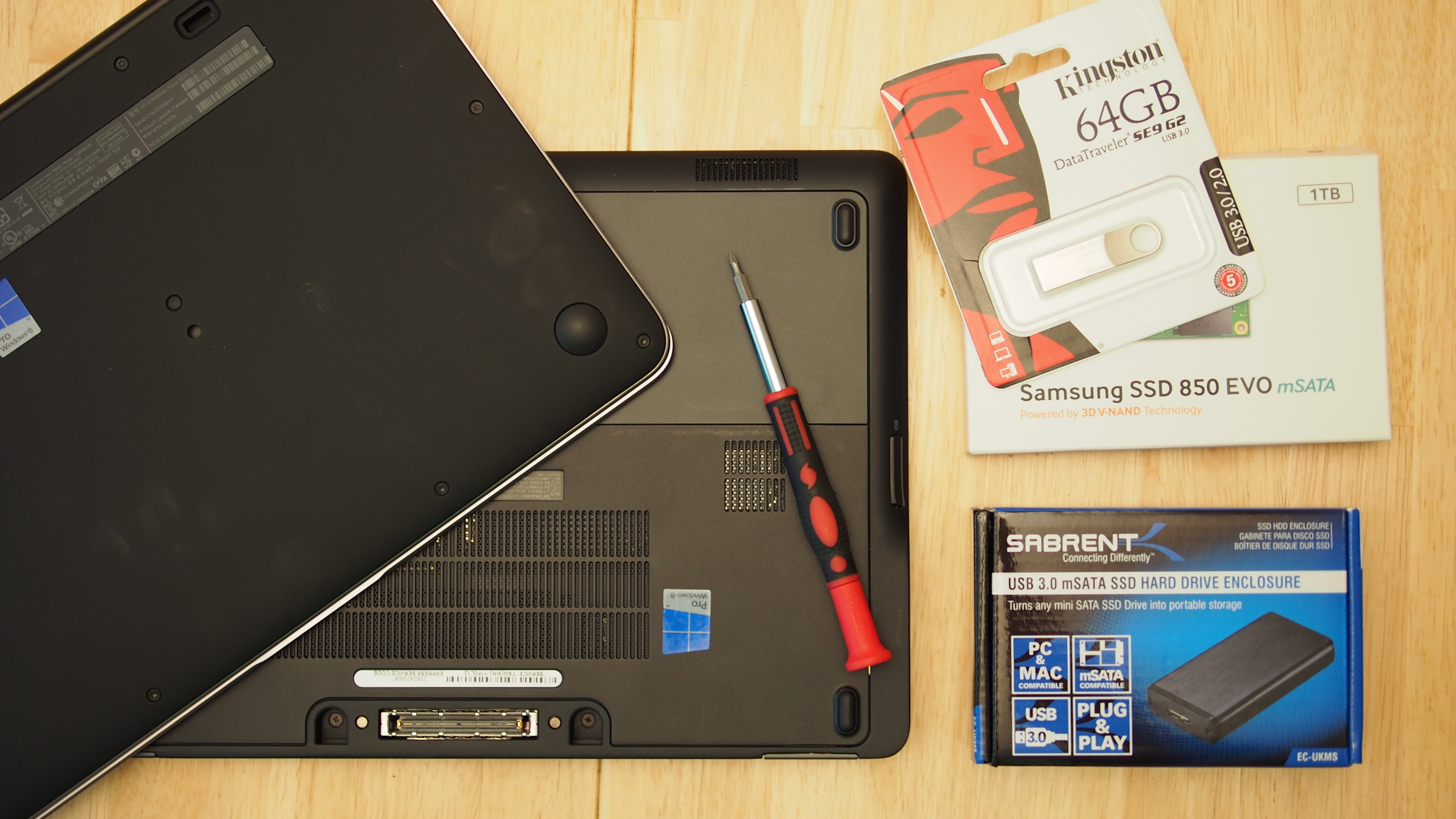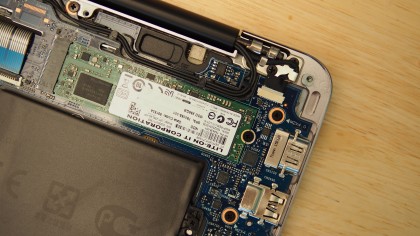How to upgrade the SSD in your business Ultrabook
Bonus: you'll also gain a high capacity external USB drive

If you bought a business notebook, chances are the hard drive or solid state drive on your system is upgradeable.
Upgrading your drive gives your business Ultrabook a new lease on life. You can replace a malfunctioning drive, or you stand to gain faster performance with a high speed drive or more storage capacity. If you're replacing an internal hard drive for a solid state one, you'll benefit from much faster read and write speeds.
Unlike consumer Ultrabooks, business Ultrabooks and mobile workstations come with a removable bottom panel. This panel gives you access to the RAM and SSD inside your laptop. Here are two methods for installing a new drive and transferring your data over:
Before you begin
Before you begin, you'll need to open your Ultrabook and see what type of solid state or hard drive your system contains. There are three popular types of drives available today – SATA solid state drives or 2.5-inch SATA hard drives, mSATA SSD and M.2 SSD.

The procedure for opening your system varies by device and device manufacturer. Systems – like the HP EliteBook Folio 1020 G1 – with non-removable batteries will have a large panel covering the entire bottom of the laptop. This panel can be removed by unscrewing all the visual screws on the bottom of the notebook.

On business Ultrabooks – like the Dell Latitude 12 7000 (E7250) – with a removable battery, you may have to take off the battery first. On the Dell, once I removed the battery, I gained access to two screws that secure the bottom cover. Once the screws are off, I can slide the bottom plate off.

After the bottom cover is removed, you'll have access to your notebook's internal components, including the SSD, RAM and wireless cards. You'll want to examine to see if your SSD or hard drive is labeled as a SATA drive, mSATA SSD or M.2 SSD. SATA drives are the largest of the three, and are sized like a traditional 2.5-inch hard disk drive.
Sign up to the TechRadar Pro newsletter to get all the top news, opinion, features and guidance your business needs to succeed!
M.2 format drives are narrow, but long, while the rectangular mSATA SSD are wider but shorter. For comparison, the EliteBook Folio 1020 G1 uses the M.2 format while the Dell Latitude 12 7000 uses the mSATA format.
After you determine what type of drive your system utilizes, you can order a new drive – either of the same size and capacity as a replacement, an upgrade with a faster speed or a capacity upgrade with more storage – of the same type as the one in your notebook.
For those who have the need for capacity, Samsung recently announced a 2TB SATA SSD, while the mSATA and M.2 formats go up to 1TB and 512GB, respectively.